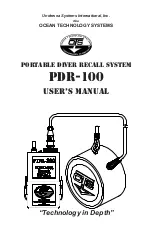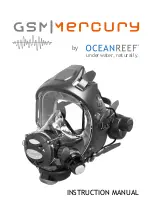
System Description
Firmware
8-4
Model 48
i
Instruction Manual
Thermo Fisher Scientific
Low-level embedded processors are used to control the various functions on
the boards, such as analog and digital I/O. These processors are controlled
over a serial interface with a single high-level processor that also controls
the front-panel user interface. The low-level processors all run a common
piece of firmware that is bundled with the high-level firmware and loaded
on power-up if a different version is detected.
Each board has a specific address that is used to identify to the firmware
what functions are supported on that board. This address is also used for
the communications between the low-level processors and the high-level
processor.
Every tenth of a second, the frequency counters, analog I/O, and digital
I/O are read and written to by the low-level processors. The counters are
accumulated over the past second and the analog inputs are averaged over
that second. The high-level processor polls the low-level processors once
per second to exchange the measurement and control data.
Signals are gathered from the low-level processors once per second, and
then processed by the high-level processor to produce the final
measurement values. The one-second accumulated counts are accumulated
and reported for the user-specified averaging time. If this averaging time is
greater than ten seconds, the measurement is still reported every 10
seconds. The one-second average of the other analog inputs are reported
directly (no additional signal conditioning is performed by the high-level
processor).
The front panel display, serial and Ethernet data ports, and analog outputs
are the means of communicating the results of the above calculations. The
front panel display presents the concentrations simultaneously. The display
is updated every 1-10 seconds, depending on the averaging time.
The analog output ranges are user selectable via the firmware. The analog
outputs are defaulted based on the measurement range. The defaults are
calculated by dividing the data values by the full-scale range for each of the
three parameters and then multiplying each result by the user-selected
output range. Negative concentrations can be represented as long as they
are within -5% of full-scale. The zero and span values may be set by the
user to any desired value.
Instrument Control
Monitoring Signals
Output
Communication
















































